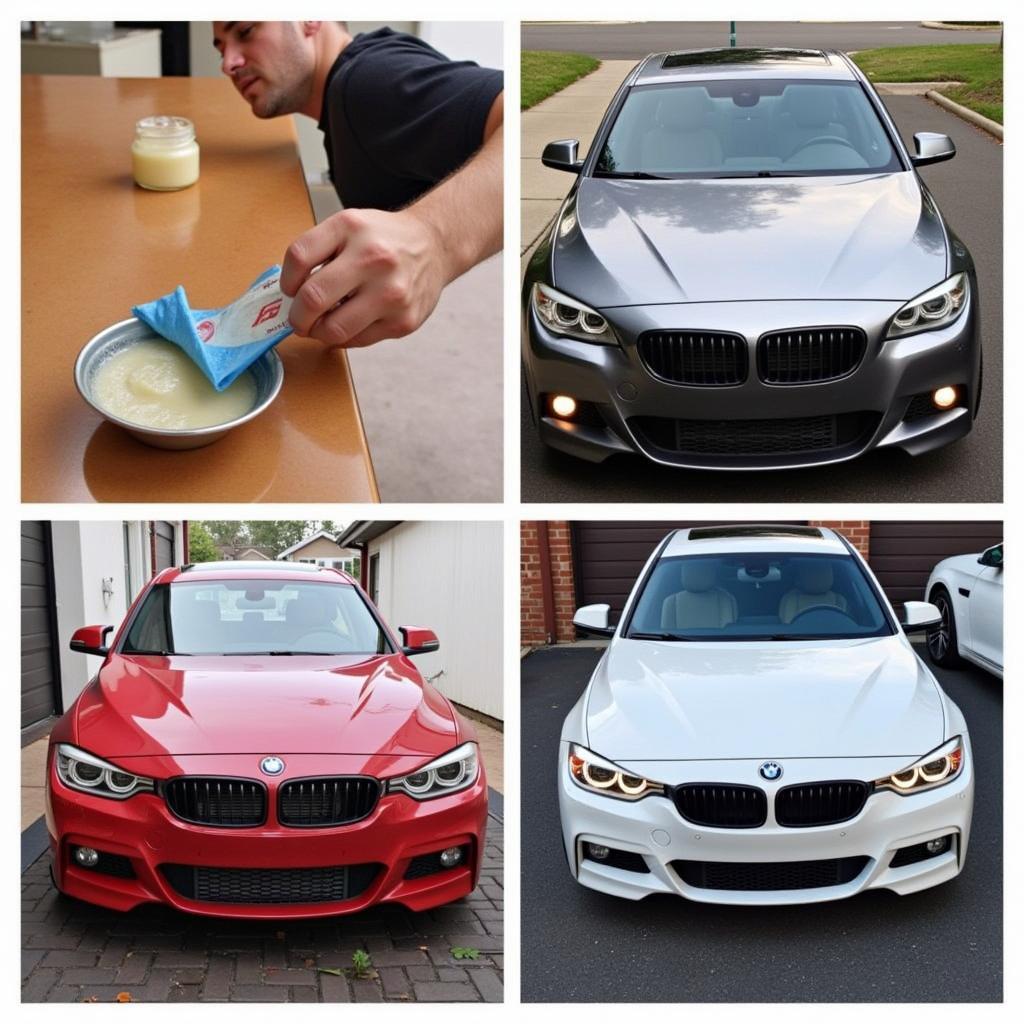Dealing with car paint chips can be frustrating, especially when you’re aiming for that pristine look. Whether you’re familiar with “Quinn the Eskimo” (better known as “The Mighty Quinn” by Bob Dylan) or not, this guide will delve into everything you need to know about car paint chip repair, offering practical advice and professional insights.
Understanding Car Paint Chips and Their Causes
Car paint chips are small areas of damage where the paint has flaked or chipped away, exposing the underlying metal or primer. These blemishes not only detract from your car’s appearance but also leave it vulnerable to rust and further damage. Various factors contribute to paint chips, from everyday road debris like rocks and gravel to minor accidents, harsh weather conditions, and even improper car washing techniques. Ignoring seemingly small chips can lead to more extensive and costly repairs down the road.
Identifying Different Types of Paint Chips
Understanding the type of chip you’re dealing with is crucial for effective repair. Small, superficial chips that only affect the clear coat are generally easier to fix than deeper chips that reach the base coat or primer. Sometimes, a chip might appear small on the surface but hide a more significant underlying issue. Proper assessment is key to choosing the right repair method.
DIY Car Paint Chip Repair: Step-by-Step Guide
For minor chips, a DIY approach can be effective and cost-efficient. Here’s a step-by-step guide:
- Clean the Area: Thoroughly clean the chipped area with soap and water, followed by a dedicated automotive cleaning solution to remove any dirt, wax, or debris.
- Sand the Chip (if necessary): If the chip is rough or uneven, use fine-grit sandpaper to smooth the edges. Be gentle to avoid further damage.
- Apply Touch-Up Paint: Using a precision applicator or a toothpick, carefully apply touch-up paint to the chip, ensuring a smooth and even layer. Several thin coats are better than one thick coat.
- Level the Paint: If necessary, use a paint leveling solution to remove any excess paint and create a flush surface.
- Sand and Polish (if necessary): Once the touch-up paint is dry, use fine-grit sandpaper to level the area further. Follow up with polishing compound to restore shine.
Choosing the Right Touch-Up Paint
Selecting the correct touch-up paint is paramount for a seamless repair. Refer to your car’s owner’s manual or the information sticker usually located inside the driver’s side doorjamb for the exact paint code.
When to Seek Professional Help
While DIY repairs are suitable for minor chips, more significant damage requires professional attention. Deep chips, extensive chipping, or damage that has led to rust should be addressed by a qualified auto body repair shop. Attempting to repair such damage yourself could worsen the problem.
“For deep or complex paint chips,” explains Mike Johnson, Lead Technician at AutoBody Experts, “professional repair is essential. We have the tools and expertise to match the paint perfectly and ensure a long-lasting, flawless finish.”
Preventing Car Paint Chips
Taking proactive measures can help protect your car’s paint from future chips. Regular waxing, using paint protection film, and parking strategically can minimize the risk of damage.
“Protecting your car’s paint is an investment,” adds Sarah Williams, Automotive Detailing Specialist at Pristine Auto Care. “Regular maintenance and preventative measures can save you from costly repairs down the line.”
 Protecting Your Car's Paint from Chips
Protecting Your Car's Paint from Chips
Conclusion
Quinn the Eskimo car paint chip repair, though a seemingly unusual search term, highlights the need for effective solutions for this common car problem. From DIY fixes to professional interventions, understanding the nature of the damage and taking appropriate action is crucial for preserving your car’s appearance and protecting its value. Whether you’re tackling a small chip or facing more extensive damage, this guide equips you with the knowledge to make informed decisions.
FAQ
- How much does professional car paint chip repair cost? The cost varies depending on the severity and extent of the damage.
- Can I use nail polish for car paint chip repair? While tempting, nail polish isn’t formulated for automotive paint and can cause further damage.
- How long does touch-up paint take to dry? Drying time varies depending on the product, but generally, it takes a few hours.
- Can I wash my car after applying touch-up paint? It’s best to wait at least 24 hours before washing your car.
- How can I prevent rock chips on my car? Maintain a safe following distance and consider applying paint protection film.
- What is the best way to find my car’s paint code? Check your owner’s manual or the information sticker inside the driver’s side doorjamb.
- Can I repair rust underneath a paint chip? Surface rust can sometimes be addressed with DIY methods, but deeper rust requires professional attention.
Need further assistance? Contact us via WhatsApp: +1(641)206-8880, Email: [email protected]. Our 24/7 customer support team is ready to help.

